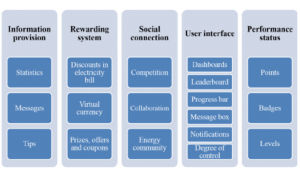Share This
Related Posts
Tags
Sustainable Fun
By Erica Rascón on Aug 21, 2019 in Energy, News
Want to cut costs across your portfolio while improving environmental conditions for future generations? Of course you do. You can achieve both when you turn sustainability initiatives into games that get residents and tenants involved. The basic tools below can help you get started today.
Gamification: Undercover Education (and Self-Help)
Meetings, lectures, and classes on saving energy rarely alter our habits. Feedback, seeing the results of our actions often in real-time, has proven to help to change habits. That’s where gamification fits into your energy-saving strategy.
What is gamification? In short, it’s implementing game design elements in non-game contexts. It’s making something that tends to be unexciting and intangible more exciting and interactive.
Copernicus Institute of Sustainable Development in the Netherlands published research on the gamification of energy savings. Researchers concluded that solely issuing smart meters in buildings did not result in optimal energy savings. It was also necessary to change residents’ energy usage behavior. Games proved to be an effective way to heighten awareness and alter user habits.
Historically, residents and tenants are slow to change comfortable behaviors even if we know that we can save money. That’s because changing our behaviors takes effort, such as closing blinds before we leave the building to minimize radiant heat or using an app to turn off lights and outlets. None of those tasks takes much effort. But any task is yet another thing to do in a world where we already feel too busy! Gamification helps to take the effort out of changing our comfortable behaviors and makes conserving resources more entertaining.
Copernicus Institute details the following components for effective gamification of energy savings.
What Makes Gamification Successful?
Gamification can be simplified for both commercial and multifamily properties. The American Council for an Energy Efficient Economy (ACEE) game Energy Chickens illustrates the benefits of the most basic energy gamification components:
- Depict users’ current energy usage as a baseline- residents and tenants need to understand their current habits and how they impact costs
- Provide tips on how to improve energy efficiency- users need to know what to do to decrease energy usage and improve their ranking in the game
- Record data on users’ energy usage at multiple points throughout the day – daily interaction with the game is necessary to influence users’ daily decision making
- Reward users for decreasing energy usage- acknowledge users’ progress with points, rewards, and new levels of achievement
- Penalize users for increasing energy usage- draw attention to poor choices with point deductions or other penalties
- Encourage competition- Competition increases engagement amongst users and promotes a sense of urgency to reach sustainability goals
Getting Started with Gamification
First, get an idea of how much your group knows about energy usage and efficiency measures. Use ENERGY STAR Treasure Hunt to discern if your groups understands the basics of improving energy efficiency.
You can then use the six components listed above to create your own game. Odds are, there are at least a few active or former gamers on your team. Assemble a task force of gamers to help create the parameters of your energy savings activity. (The game can be an app or as simple as a bulletin board that tracks teams’ progress and achievements.) Set monthly and quarterly goals—along with monthly and quarterly rewards—to motivate participants.
If resources are available, Brilliency creates custom gamification apps for energy efficiency. This service empowers clients to integrate branding and unique objectives into the gaming process. The app communicates directly with utility software.
If both time and resources are tight, this list of energy management games for commercial properties offers out-of-the-box apps that you can start using right away! The ACEE offers a list of tried-and-true Gamified Energy Efficiency programs appropriate for commercial and residential use.
Before you can benefit from gamification, you need a clear picture of energy usage across your portfolio. Join a webinar to learn about your options for utility data and recovery analytics.

